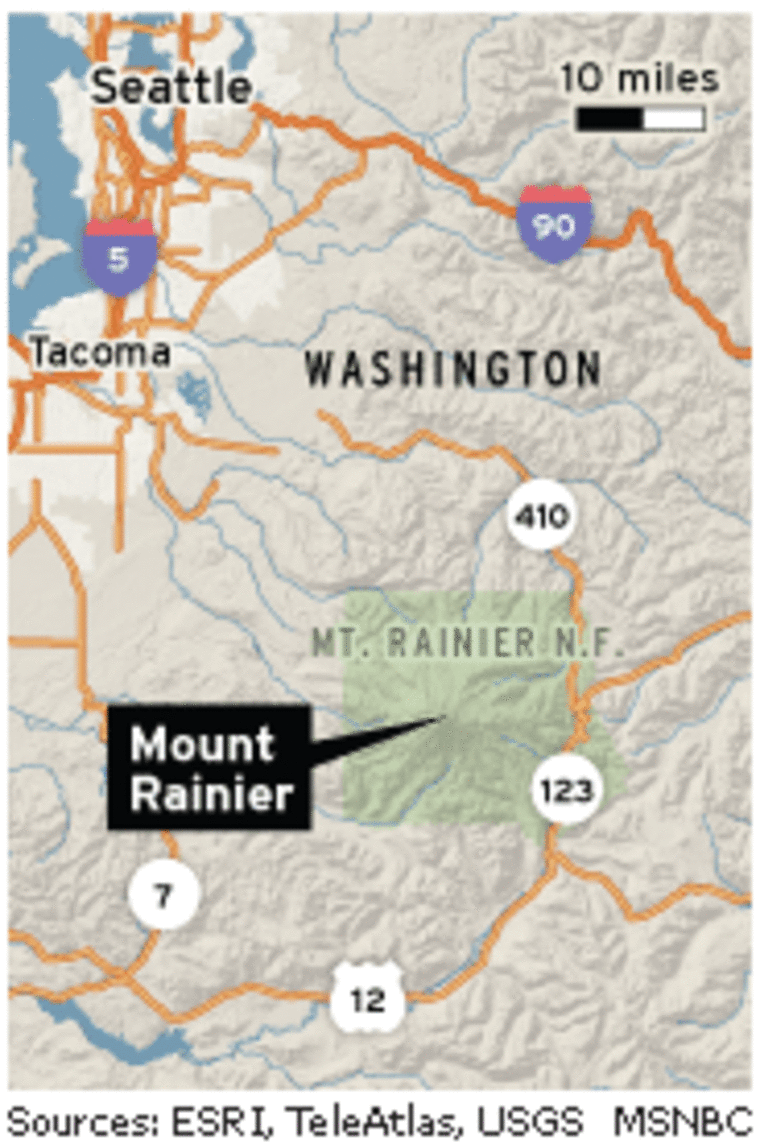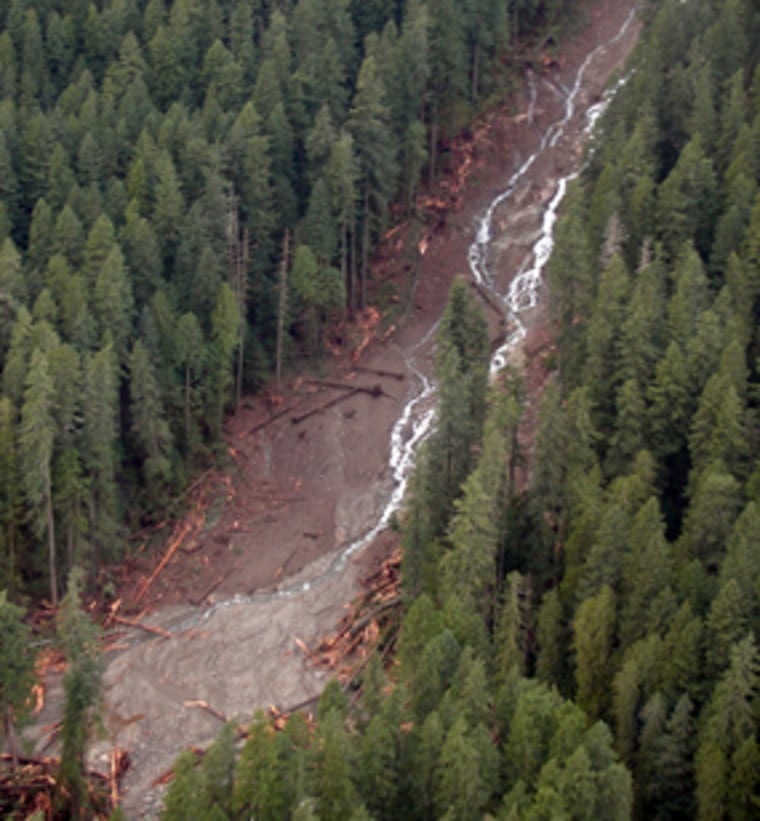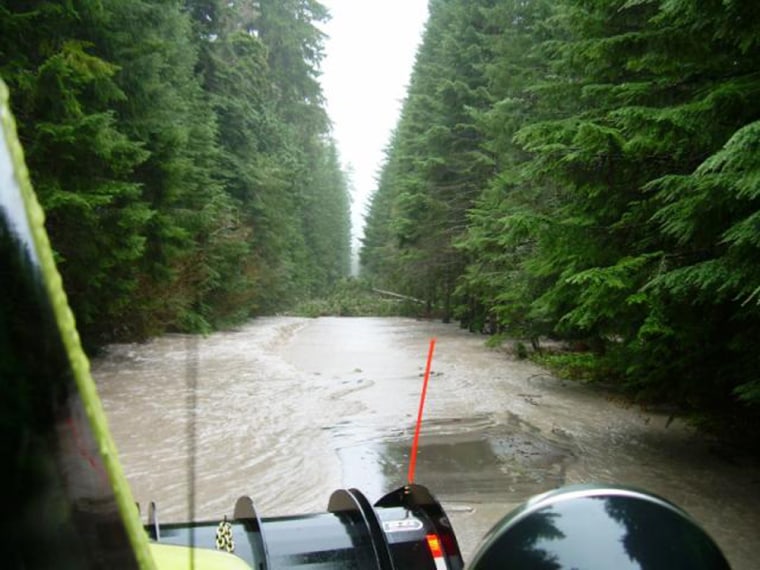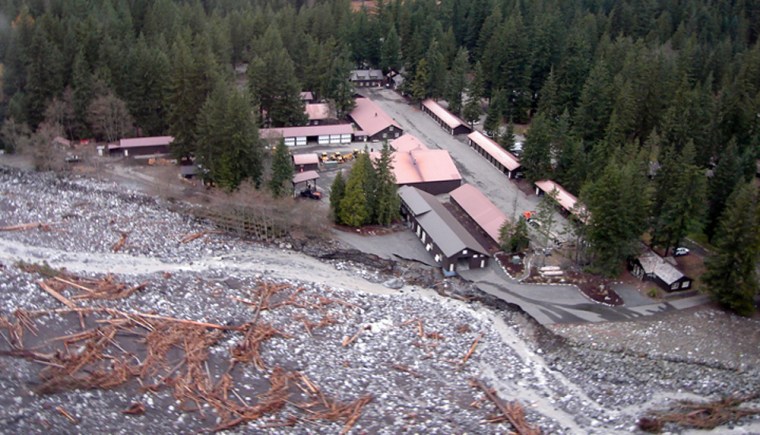Nearly 18 inches in 36 hours.
That's how much rain fell earlier this week at Mount Rainier National Park, one of the crown jewels of the Pacific Northwest. The deluge swamped roads and bridges, cut power and sewer lines and forced park officials to swing the gates closed to visitors for the first time in 26 years.
Most river levels were down on Friday, and the National Weather Service said the precipitation through the weekend wasn't expected to cause more flooding, in part, because most falling in the mountains was expected to be snow. Still, recovery and damage assessments, particularly in hard-hit parts of Western Washington, are likely to take weeks.
Park officials said they hope to return to normal operations by Christmas. In some places, they won't know the extent of the damage until after the snow melts next spring.

"Some places get that much rain in a year, and we had it in 36 hours," spokeswoman Lee Taylor said, noting the 17.9 inches of rain that fell Sunday and Monday. "When we were finally able to get out and start assessing the damage, it was a very sobering day."
Mount Rainier wasn't the only recreational region to suffer damage from the so-called "Pineapple Express," a warm weather system from the South Pacific that blew through the Pacific Northwest. The heavy rains also washed out a major highway near Oregon's Mount Hood and closed the North Cascades Highway in northcentral Washington.
Main road cut off
At Mount Rainier, park officials didn't have to travel far from their headquarters outside the southwest entrance to find the damage. Just inside the park, the Nisqually River engulfed the main scenic highway through the park, leaving a quarter-mile gash in the Nisqually Road. Where the Sunshine Point campground once stood, the river now flows.
All other roads in the mountainous park closed Nov. 1 for the winter season, though they, too, suffered extensive damage. Highway 123 and the Stevens Canyon Road on the park's east side were impassible due to multiple washouts. The Carbon Canyon Road, a dirt road in the northwest corner of the park, was washed out in six places.

Several campgrounds were inundated by debris or floodwaters. The Nisqually River wiped out the main power line, cutting electricity for the western half of the park, as well as the main sewer line at Longmire, where a historic inn and other outbuildings sit.
The last time park officials had to close the park like this was after the May 1980 eruption of nearby Mount St. Helens.
"An optimistic estimate for repairs is two weeks for some road access. Utility repair work could still take longer, which would mean there are still no services at Longmire," Taylor said. "We're hoping we can have normal operations for the Christmas holiday."
Christmas is a popular season at Mount Rainier, with rangers typically offering guided snowshoe walks and cross-country skiers hitting the trails when enough snow has fallen. A snowplay area at Paradise, at the base of the mountain, allows sliding and sledding activities.
Hotel, park buildings hit
Getting the Nisqually Road reopened from the southwest entrance to Paradise is key to those activities, as well as to continued construction on the Paradise Inn, an aging lodge and restaurant built in 1917 that is undergoing refurbishment.

The contractor handling the construction was working to seal the inn's roof to prevent water damage, Taylor said. Two other park buildings fared less well: An emergency operations center in Longmire, which used to sit about 50 yards from the Nisqually River, now hangs over the riverbank, and the Ipsut Creek Cabin in the northwest corner of the park didn't move, but now has a creek flowing beneath it.
Park Superintendent Dave Uberuaga flew over the area Thursday to assess the damage and was working to determine a cost estimate for repairs. In the meantime, crews were furiously working to repair the main road.
"Our focus is on the winter access route, so we can get that open again," Taylor said, adding that there is less urgency to repair the closed roads. "But if we aren't able to do repair work now, then it will have to wait until the spring melt-out, and that could delay some of the spring openings here."
